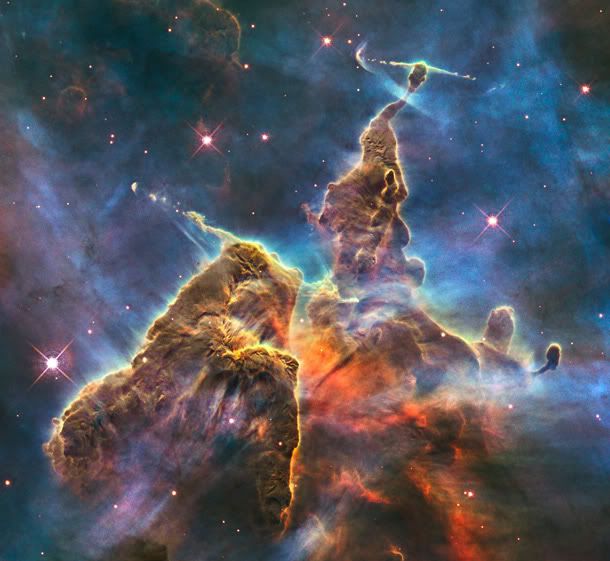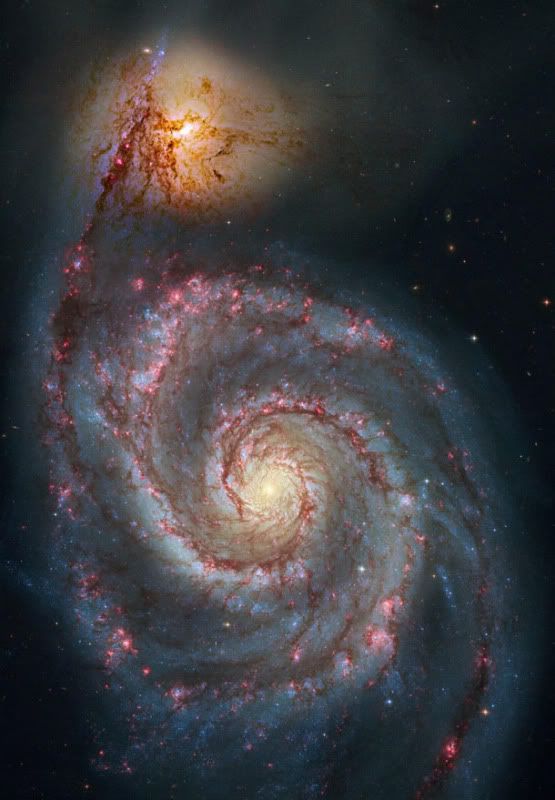
Space near the Sun is mostly empty, devoid of gas and stars. But travel 7500 light years in the direction of the constellation Carina and you'll slam into one of the largest and most complex star-forming regions in the galaxy: the sprawling Carina nebula. Massive stars being born there blast out radiation and winds that sculpt the surrounding material, creating weird and wonderful shapes.
So what better way for astronomers to celebrate the Hubble Space Telescope's 20th year in orbit than to use it to take a huge mosaic of Carina? This astonishing portrait shows the towering pillars of gas and dust being eaten away by cosmic erosion; the narrow, focused jets of material blasting away from stars eating away at their cocoons; ribbons and sheets of compressed gas lighting up space; and the nascent stars themselves as they turn on for the first time.

The Whirlpool is actually two galaxies interacting with one another. The spiral galaxy is nearly face-on, and you can easily trace the magnificent arms, laced with red gas clouds forming new stars, and dark lanes of dust created when stars are born and when they die. The other galaxy is the orange blobby one, a dwarf irregular. It may have already passed through the bigger galaxy twice, and will eventually merge with it. We think all big galaxies grow by consuming smaller ones in this manner. In a few hundred million more years there won't be two galaxies left to see, just one somewhat bigger one. Our own Milky Way Galaxy probably underwent a similar event many times!




No comments:
Post a Comment